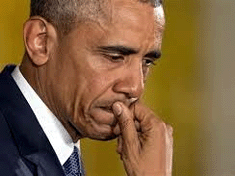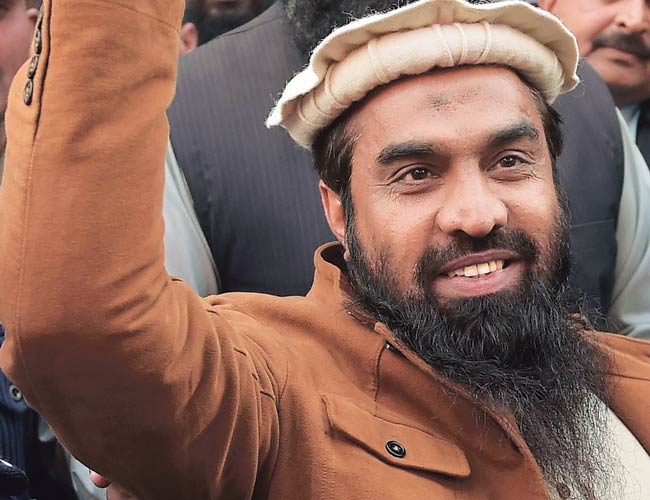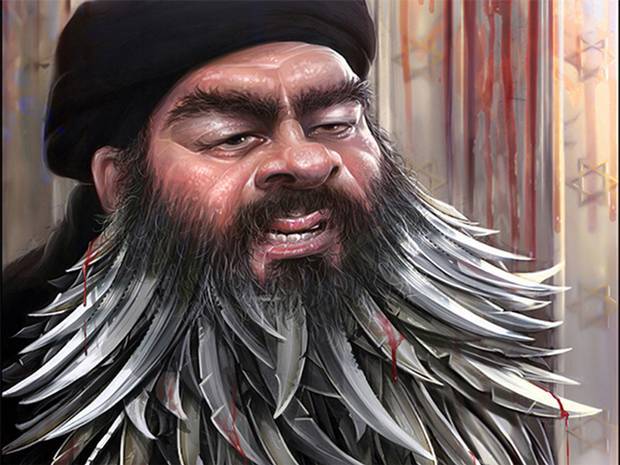Taliban chief’s death raises questions

ISLAMABAD: (Asia Times): The killing of Afghan Taliban’s leader Mullah Akhtar Mansour in a US drone strike in Pakistan has raised more questions than answers, especially about the future of the stalled peace talks between the Afghan government and the Taliban. The CIA-led drone attack was conducted just days after representatives from the US, Pakistan, Afghanistan and China held another round of negotiations in Islamabad to discuss ways to revive the long-stalled peace negotiations.
Mansour’s death not only shattered the chances of a breakthrough on the peace front, it has also raised the prospects of the Taliban control going into the hands of a more radical commander, Sirajuddin Haqqani. Mansour’s elimination could also help other militant groups like the Islamic State (IS) and Islamic Movement of Uzbekistan (IMU) to emerge stronger in Afghanistan. The operation against Mansour indicates the American determination to go after the Taliban leadership in any part of Pakistan which could further damage the already strained Pak-US relations.
The US House of Representatives passed several amendments on May 20 to restrict US military aid to Pakistan, making it conditional with showing progress in arresting and prosecuting Haqqani network’s senior leaders. It is for the first time the American CIA-run drones have directly targeted and killed a key leader of Afghan Taliban and that too in Baluchistan province of Pakistan. Mansour was eliminated despite the fact that the American government has not yet officially designated the Afghan Taliban a terrorist group.
Who was Wali Mohammad?
Mansour was killed five years after the al-Qaeda leader Osama bin Laden was eliminated in the Abbottabad area of Pakistan. The drones fired on Saturday (May 21, 2016) at 04:30 pm near Ahmed Wal Town in the Kuchaki area of Naushki district, 200 km off Quetta Baluchistan, struck a white Toyota Corolla car bearing registration number ALL 570, killing two people whose bodies were burned beyond recognition. The vehicle, which was a rented taxicab, had entered Pakistan from Iran at Zero Point in Taftan, a town which shares border with Iran. The driver of the car – Muhammad Azam – worked for the Al Habib car rental company based out of Quetta and hailed from Taftan town in Baluchistan’s Chaghi district.
According to initial information collected by Pakistani authorities from their Iranian counterparts, the car passenger was carrying euros when he entered Pakistan which he then converted to Pakistani rupees. The two corpses were brought to the Civil Hospital in Quetta in an ambulance, where the body of the driver was handed over to his relatives after autopsy. The corpse of the man named Wali Mohammad was charred beyond recognition and is still being kept at the Civil Hospital in Quetta.
The Pakistani authorities had always refuted the repeated claims of the American and Afghan officials about the presence of the Afghan Taliban leaders on its soil. But it has now transpired that Mansour was keeping a Pakistani passport under the fake name of Wali Mohammad. A Pakistani passport No AB67946229, recovered from the rubble of the droned vehicle showed a picture of Mansour. Yet it contained the fake name of Wali Mohammad, son of Shah Mohammad of Kalla Abdullah district in Baluchistan. It showed that the holder had left Pakistan for Iran on March 28, 2016 and returned the day he was killed. According to the passport, his date of birth is January 1, 1972. The passport was issued on October 11, 2011 by National Data Registration Authority (NADRA) and it was to expire on October 10, 2016.
A Pakistani Computerised National Identity Card, also found at the scene, showed him a resident of Karachi. The permanent address is of Qila Abdullah and the temporary address is given as Bismillah Terrace plot, FL 03, Flat No B-016, Karachi East. Date of issue of the card is Sept 10, 2012. The passport details of Wali indicate that he was a frequent traveler and over the past nine years used at least two Pakistani airports for his visits abroad. Wali frequently travelled between Karachi and Dubai, and Iran via the Pakistani border town of Taftan.
Wali had started travelling abroad on Mach 12, 2006, and flew to Dubai from Karachi airport. His last travel on March 31, 2015 was also from Karachi to Dubai. He visited Dubai 18 times while using Karachi airport on valid visas and once from Quetta airport. He had travelled to Iran twice through the Taftan border crossing. He first went to Iran on February 19, 2016, and returned to Pakistan through the Taftan border town on March 10, 2016. He again travelled to Iran on April 25, 2016 year and returned to Pakistan through the same route on May 21, 2016. Wali reported at the FIA immigration check post at Taftan 9:07am on May 21, 2016. He had lunch at Padak near Dalbandin area of Chagai district before resuming the journey which proved his last.
Was the US act appropriate?
While making public the news, US Secretary of State John Kerry said the United States had notified the Pakistan government of the drone strike. “The United States conducted a precision air strike that targeted the Taliban leader Mullah Mansour in a remote area of the Pak-Afghan border. Mansour posed a continuing, imminent threat to US personnel and Afghans. If people want to stand in the way of peace and continue to threaten and kill and blow people up, we have no recourse but to respond and we responded appropriately,” Kerry said.
“We have had long-standing conversations with Pakistan and Afghanistan about this objective with respect to Mullah Mansour, and both countries’ leaders were notified of the airstrike. It is important for people to understand that Mansour has been actively involved in planning attacks in Kabul, across Afghanistan, presenting a serious threat to Afghan civilians and to the coalition forces”. But a Pakistani foreign office spokesman maintained in his reaction that the information was shared with the Prime Minister and the Army Chief of Army Staff after the drone strike had been carried out.
“While further investigations are underway, Pakistan wishes to once again state that the drone attack was a violation of its sovereignty, an issue which has been raised with the United States in the past as well”, spokesperson for Pakistan’s Ministry of Foreign Affairs said. Pakistan had been the main ally of the Afghan Taliban during their 1996-2001 Mullah Omar-led rule and continues to back them even though it is under tremendous American pressure to cooperate in the ongoing operations against the Afghan Taliban after their refusal to come to the negotiation table.
Who will succeed Mansour?
The elimination of Mansour is expected to trigger yet another succession battle too within the Afghan Taliban besides deepening fractures that emerged in its ranks after the death of Mullah Mohammad Omar. That the drone strike was duly authorized by President Obama has made it clear that the US is determined to go after the Taliban leadership in Pakistan, which the Ghani government in Kabul has repeatedly accused of sheltering the Afghan insurgents.
Informed circles in the Pakistani security establishment believe that the chief operational commander of the Haqqani militant network, Sirajuddin Haqqani, who is known for employing ruthless tactics against the coalition forces in Afghanistan, is set to become the new leader of the Taliban. Mansour had appointed Sirajuddin as one of his two deputies along with Haibatullah Akhundzada, a renowned cleric from the Taliban heartland of Kandahar who had served as the Chief Justice of Afghanistan under the Taliban regime.
The lethal Haqqani group, which allegedly operates from the Pakistani soil and whose leadership is being protected by Pakistani security establishment as a “strategic asset”, has carried out some of the most notorious (cross-border) terrorist attacks in Kabul, killing hundreds of people. While the Haqqanis do not have clout with fighters in the south, Mansour’s death could further strengthen their position within the insurgency, thus making reconciliation even more difficult.
Sirajuddin and his father are ideologues who worked with Sheikh Issa al Masri, an influential al-Qaeda thinker who used to radicalize jehadis by indoctrinating them with al-Qaeda’s version of Islam. When the US-led Allied Forces entered Afghanistan following the 9/11 terrorist attacks, Haqqanis sought refuge from the Pakistani ISI in North Waziristan and became one of the first anti-US elements commanders based in the border areas.
Mansour had made Sirajuddin one of his two deputies keeping in view his military might and the political influence of his ageing father, Jalaluddin. In fact Mansour was a founding member of the Afghan Taliban. He knew Mullah Omar and Osama bin Laden personally but kept a relatively low profile until the death of Mullah Omar. When he was initially appointed the leader of the Afghan Taliban, it was largely believed that the Pakistani security establishment had paved the way for him to become Mullah Omar’s successor. But his tough stance on peace talks with the Afghan government left the Pakistani establishment, which was supportive of the reconciliation process, embarrassed.
The Taliban insurgency saw an exceptional resurgence under Mansour’s leadership as his fighters intensified attacks in various parts of Afghanistan to mount pressure on the hard-pressed Afghan security forces. Despite pressures from the United States and Pakistan, he refused to hold face-to-face peace talks with the Afghan government and set preconditions before negotiating.
Mansour grew up in the Maiwand district of Kandahar province in Afghanistan, and lived not far from the home of Mullah Omar when the country descended into civil war after the withdrawal of Soviet troops. He joined hands with the Taliban when it began as a movement to tackle corrupt and cruel warlords in the area, helping bring in money and guns from rich businessmen of his tribe. He then came to Pakistan and lived there for several years as a student of Darul Uloom Haqqania Madrassa at Akora Khattak, Khyber Pakhtunkhwa province. Mullah Omar and Sirajuddin studied in the same madrassa.
The young Mansour eventually rose to become aviation minister, handling the grinding day-to-day logistics of the group’s air battles against opposing factions in the north. He got to know Bin Laden during that period because he lived not far from Kandahar airport, where Mansour spent most of his time, and would sometimes drop by to talk with volunteer Arab fighters. He had surrendered in 2001, like many other key Taliban leaders, yet the American forces refused to believe that the commanders had given up fighting. After a series of aggressive military raids, he fled to Pakistan where he helped reshape the Taliban as an insurgent force.
Will Yaqoob emerge as leader?
According to The New York Times of October 5, 2015, “Mullah Mansour owns a house in the western tourist haven of Dubai which he visits regularly and from where he runs part of a business empire.” “He is not only wealthy, but well-travelled and well-protected. He is said to have a home protected by the Inter-Services Intelligence agency (ISI), in the city of Quetta, from where he also runs a number of businesses including a mobile phone company… Although he is on the United Nations no-fly list, Akhtar Mansour has repeatedly taken flights in and out of Pakistan”, the report said quoting a senior Afghan intelligence official.
Mansour was elected leader of the Afghan Taliban on July 29, 2015. However, a Taliban splinter group called Fidai Mahaz (Fidayeen Front) had alleged that Mullah Omar was assassinated in a coup led by Mansour and Gul Agha. Mansour had lied about the death of Mullah Omar, for the time prior to the Afghani intelligence releasing a report of Omar’s apparent death. Some Taliban leaders considered Mansour’s selection as the new leader of the Afghan Taliban as invalid. The head of Talibans’ political office in Qatar, Tayyab Agha, too opposed it. Some preferred Mohammed Omar’s eldest son, Mullah Mohammad Yaqoob, as the leader. Yaqoob was backed by his uncle Mullah Abdul Mannan and former Taliban military chief Abdul Qayyum Zakir.
On April 5, 2016, Mansour handed a senior military position to Yaqoob within the Afghan Taliban after some senior Taliban dissidents announced their allegiance to him. Yaqoob, who had publicly rejected the appointment of Mansour, was made in-charge of the military commission in 15 of Afghanistan’s 34 provinces. The commission is responsible for overseeing all military affairs of the Taliban and is headed by Mullah Ibrahim Sadr. Yaqoob was included in the Taliban’s top decision-making council, the “Rehbari Shura” or the leadership council. The Afghan Taliban also inducted Mullah Abdul Manan into the leadership council.
Until his death, Mansour used to plead that reconciliation process with Kabul administration could not be resumed as long as the foreign forces remained in Afghanistan and the Kabul government did not revoke its security pacts with other countries. His successor is likely to pursue the same policy.
Amir Mir is a senior Pakistani journalist known for his research work on Islamic militancy and terrorism. He has authored several investigative books including “Talibanization of Pakistan: From 9/11 to 26/11,” “The Bhutto Murder Trail: From Waziristan to GHQ,” “The True Face of Jehadis” and “The Fluttering Flag of Jehad.”
(Copyright 2016 Asia Times Holdings Limited, a duly registered Hong Kong company. All rights reserved).




